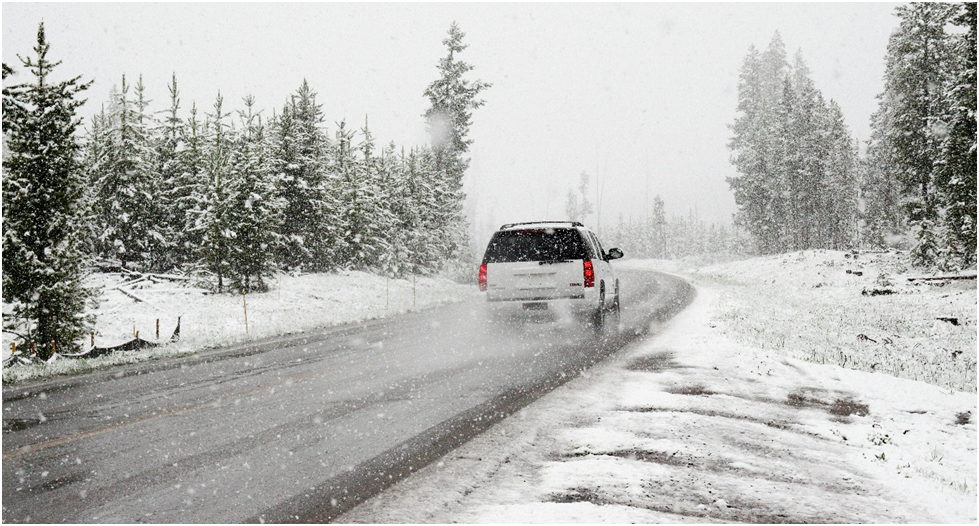Winter comes with a host of unique challenges for drivers. Heavy snowfall impairs vision, and the roads are extra slippery because of black ice. Given the circumstances, it’s only fair that road accidents are treated as just that—accidents. Unfortunately, that’s not how the legal system works, and at least one party must be held liable for the accident.
If you’re a victim of a black ice accident, you might be eligible for compensation for any injuries or property damage. However, it’s not always the other driver that’s liable. In fact, a municipality may be liable for black ice accidents. Keep reading to learn everything you need to know about liability for black accidents and how to take precautions against them.
What Is Black Ice?
Black ice, or clear ice, is a thin, transparent layer of ice that forms on horizontal surfaces like roads, pavements, and sidewalks during the winter. The subzero temperatures freeze moisture on these surfaces, creating a thin sheet of ice. Since the ice layer is so thin, it blends seamlessly with the road surface. It becomes invisible, hence the name “black ice.”
How Is Liability Determined for Black Ice Accidents?
Like other types of road accidents, liability for black ice accidents comes down to negligence. This usually consists of four main aspects:
· An existing duty of care: The party had the duty to exercise reasonable care while driving so as not to harm others.
· A breach of duty of care: The party neglected this duty of care and acted recklessly, putting others at risk of harm.
· Damages suffered by a victim: The victim in the accident suffered damage (injuries, loss of property, etc.)
· Causality: The damages suffered by the victim are a direct consequence of the negligence of the at-fault party.
It’s the victim’s responsibility to prove that the at-fault party’s breach of duty of care directly caused the damages suffered. Despite being a leading cause of accidents during winter, black ice accidents are among the most difficult to prove in terms of negligence. That’s because so many factors come into play. As such, it’s important to consult with a reputable attorney to help prove negligence.
What Parties May Be Liable for Black Ice Accidents?
Liability for black ice accidents depends on the circumstances surrounding them. Victims may be owed a duty of care by multiple parties. The following parties may be held liable for such accidents.
Other Drivers
Like other accidents, the other driver may be liable for the accident. Drivers must, therefore, exercise a reasonable duty of care on the road. This includes observing all traffic laws, avoiding distraction, maintaining their vehicles, and being mindful of the road conditions.
The following are typical instances of negligence in black ice accidents:
· Failing to maintain a safe distance from the car in front
· Speeding
· Not paying attention to the road ahead
Drivers who fail to be careful when driving during winter may be held liable for black ice accidents. Victims may prove liability by presenting physical evidence, obtaining witness statements, or finding an expert witness.
Property Owners
Property owners, including landlords, owe the public a duty of care regarding black ice. They must not allow the build-up of black ice on or near their properties. If they can’t get rid of the black ice, they must erect warning and hazard signs to alert the public. Property owners will be liable for black ice accidents occurring on properties without the necessary hazard signs.
Government Municipality
Your local municipality has a duty of care to keep roads reasonably safe and free from hazards like black ice during the winter. According to law, governments must ensure roads remain safe for drivers and pedestrians.
The municipality may be found negligent if it knew or should have known about icy road conditions but didn’t take appropriate action like salting or plowing the roads. The municipality may also be liable if it fails to adequately warn drivers about known hazards, such as posting signs or alerts.
What Steps Should Be Taken to Avoid Black Ice Accidents?
Although you can’t control the weather, you can take adequate steps to prevent the likelihood of a black ice accident. Here are a couple of measures to do just that:
· Reduce your travels: One of the best ways to stay safe against black ice accidents is by reducing your time on the road. That way, you’ll have less exposure to slippery roads. It also allows you to plan your trips better so you can opt for safer routes and better travel times during winter.
· Drive slowly: Speeding is the last thing you want to do during winter. A better approach is to drive slowly and adjust your speed according to traffic and road conditions. This puts you in a better position to navigate unsafe road surfaces.
· Stay alert for stops: The reduced traction between the tires and the icy road surface means you should anticipate stops and hit the brakes much earlier. Doing so allows you the luxury of gentle braking to avoid skidding.
· Refrain from using cruise control: You may be tempted to use cruise control during winter so you can take in the snowy landscapes, but this may work to your disadvantage. Using cruise control compromises your ability to respond quickly to the unexpected.
Conclusionon Black Ice Accidents Liability
Getting involved in a black ice accident might be scary. However, if you managed to come out unscathed or recover from your injuries, then you deserve compensation from the liable party’s insurance provider.
Remember, it rests on the plaintiff to prove negligence before the court can hold any party liable. A qualified attorney will help you pursue legal recourse and prove liability to get your deserved compensation.
As an at-fault state, Washington reserves your right to compensation for any injuries or damage to property, even if you’re going against your municipality. Just remember to take extra precautions while driving during winter to avoid being the at-fault part in a black ice accident.




